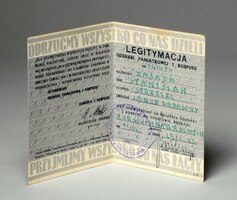Barnsley and The Second World War
From the outbreak of the Second World War in 1939 until victory in 1945, Barnsley was deeply affected by the impact of war. Alongside the rest of the country and the Allied Forces, the people of Barnsley made their contribution to stopping the oppression and expansion of the Nazi regime. Coal mines provided fuel; factories made equipment and munitions; people lived with blackouts, air raids and the rationing of everyday essentials. The people of Barnsley gave up their money, time and in some cases lives to support the war effort.
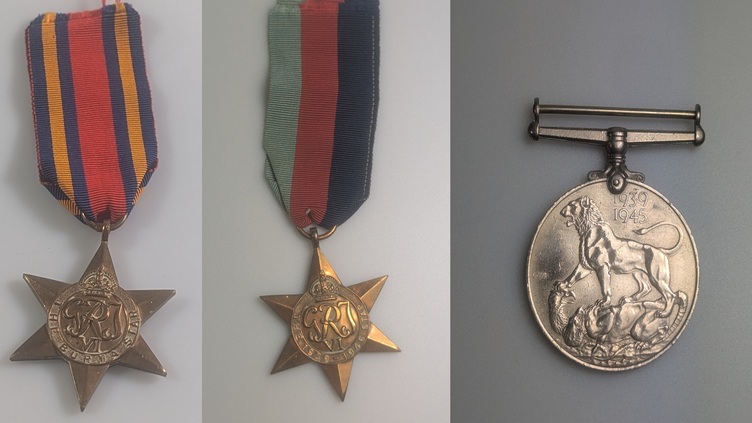
Medals
These items belonged to Eric James Armer (known as Jack) who was in the 33rd Corps of the 14th Army, a subdivision of the Indian Army. The 14th Army held one of the longest battle lines during the war stretching from the Bay of Bengal to the border with China. As well as The Star 1939-45 and the Defence Medal he also received the Burma Star for active service in the Burma campaign.
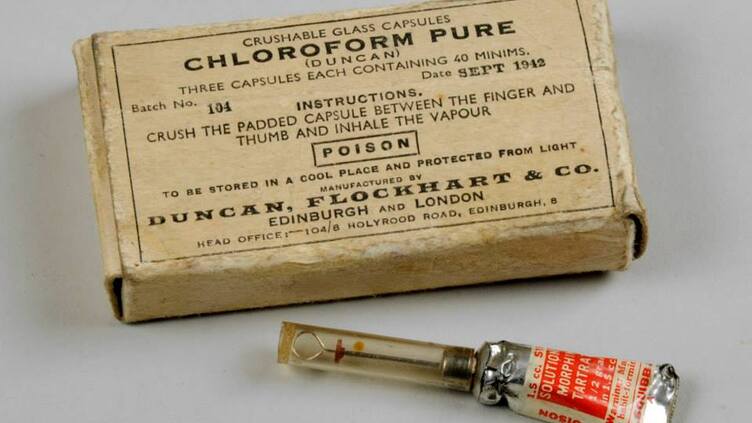
Chloroform pure
Following his escape from a German forced labour camp during the Second World War, Frank Dubrowski joined the French Resistance where he was issued chloroform to be used as an anaesthetic.
Members of the French Resistance fought against the Nazi occupation in France, they published underground newspapers, captured intelligence and kept escape routes open. It could be very dangerous work.
After the war, Frank and his wife Annie, settled in Barnsley. They lived in Worsbrough Dale until they passed away, Frank in 2005 and Annie in 2012.
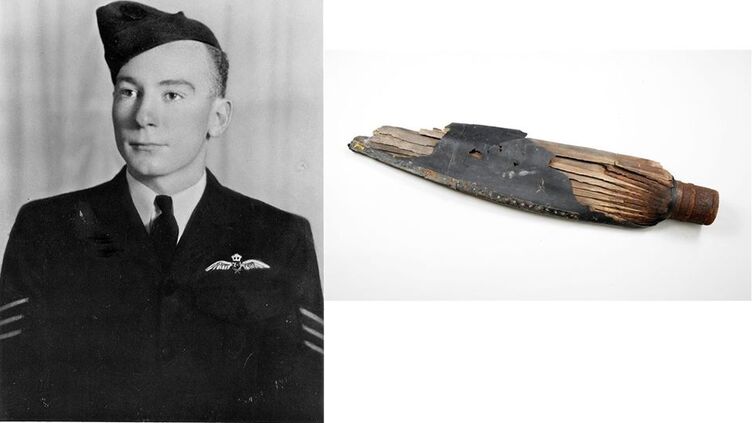
Propellor
On the morning of the 6th January the quiet of Pogmoor was interrupted when an RAF Bomber crash landed. 22 year old Australian pilot Alexander Hollingworth was killed along with Canadian crewman, 23 year old Alexander Buchanan. The pilot had headed for the Pogmoor quarry deliberately avoiding local homes and in doing so saved many lives.
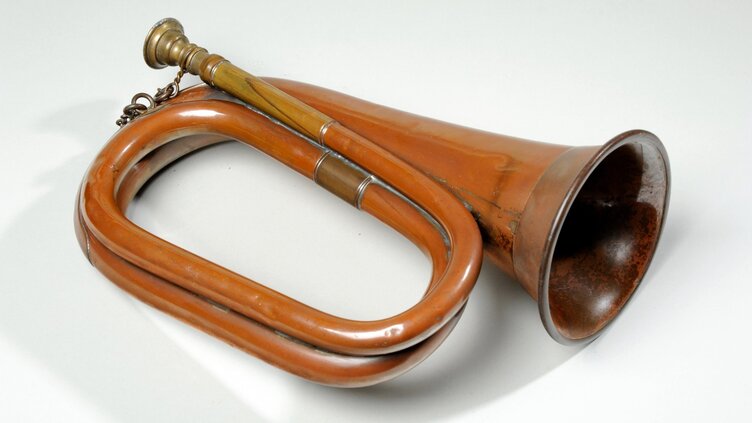
Bugle
This bugle was played by Don Booker MBE in the Barnsley Army Cadet Force Band in 1943. In later years, it was converted into a table lamp.The band was based at Barnsley Drill Hall, Eastgate, now occupied by the Barnsley Chronicle. The bandmaster was Reg Rapson who also played in a dance band.
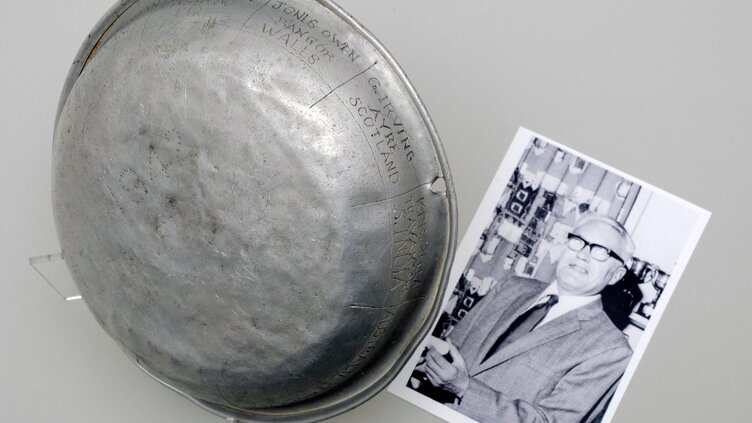
Prisoner of war bowl
This tin bowl belonged to Stanley Brazier and was the only thing he ever stole in his whole life. Stan was taken prisoner by the Japanese at the fall of Singapore and was placed in the notorious Changi Prison. Whilst there, he was sent up country as part of the labour force. He did not wish to eat his rations from a leaf so he took the bowl when he left prison. Whilst in prison, he started to inscribe the names of new friends onto the side of the bowl. He stopped engraving the bowl after lots of his friends were dying around him.
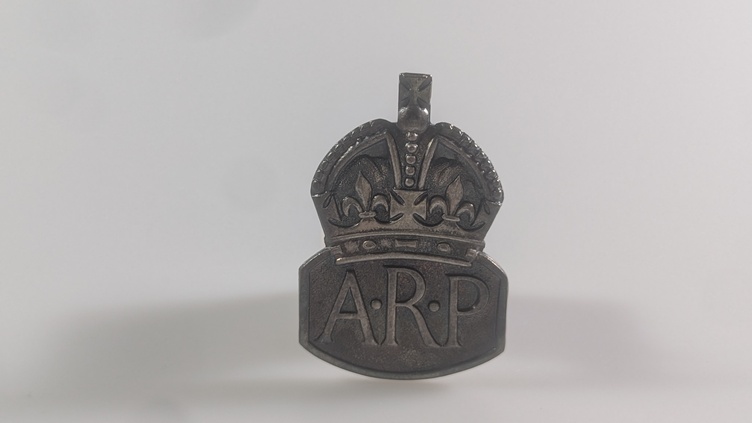
ARP badge
This badge belonged to Harold Brown. Air Raid Protection wardens were responsible for making sure that everyone took cover during an air raid and also reported any damage, injuries and fatalities afterwards. They also made
sure that blackout conditions were met both at home and when people were moving around. They could issue fines and report people who breached blackout conditions. Some people felt that ARP wardens exceeded their role at times.
Men and women were both employed as ARP wardens, with men being paid £3 per week and women £2 per week.

Dr Nesper German phone headset
One of the more mysterious WW2 objects in our collections! The donor of this headset says that her uncle used it during his time working at Bletchley Park. Obviously at the time he would not have been able to talk about his experiences working there. Another Barnsley resident who has shared her memories of working as a code breaker is Margaret Hill
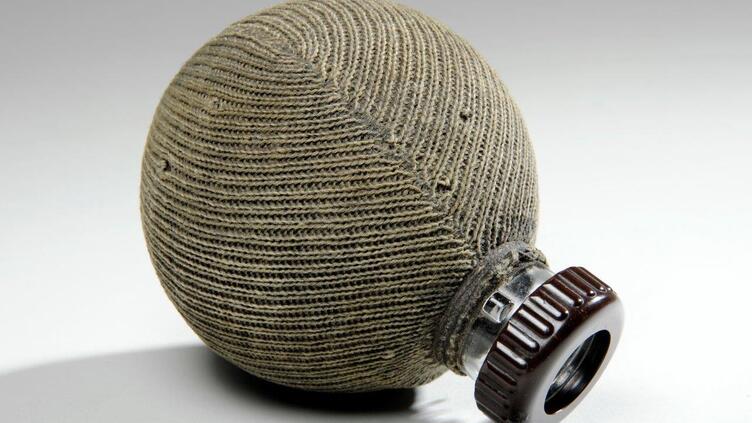
Anti-tank bomb
This anti-tank bomb (also known as a Sticky Bomb) was made at the glass factory, Beatson Clark. Many women worked there during the war. They blew the glass to form the bomb shape which was then filled with nitro-glycerine. The woolly cover was covered in a type of glue which enabled it to stick to the side of a tank before it exploded.
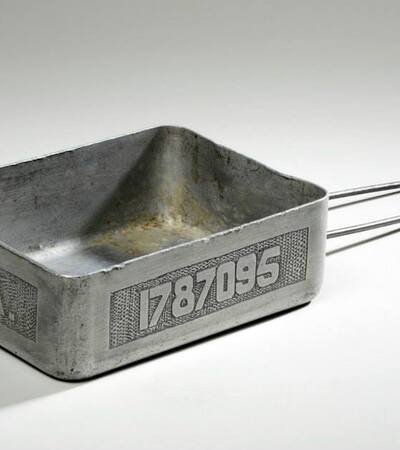
Prisoner of War mess tin
Frank Hadfield was a gunner in the Royal Artillery and was taken prisoner of war on 15th February 1942 in Singapore where he entered a Japanese camp for three years. He was treated very badly; beaten, tortured and starved. He was seventeen stone when he left and six and half when he returned.
Frank never should have gone to the Far East, he was destined for Iceland but their ship from Liverpool was given the wrong orders. As they arrived they were ordered to surrender and taken in cattle trucks to camps. He was made to work on the railways and kept a diary of events throughout the war. Some entries are very brief, as being caught writing his diary was almost certain death.
This mess tin was carved by Frank with a nail during his time as a prisoner of war. You can see his name, number and regiment.
He was released on 16th August 1945 and put on the first ship back to Southampton, arriving in October. He spent nine months recovering in hospital and suffered all his life with the terrible memories. He lived until 76 years old and worked at brickworks at Monk Bretton Colliery when he returned to Barnsley.
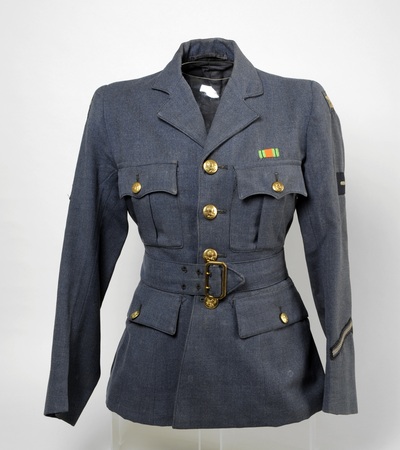
WAAF Jacket
The Women’s Auxiliary Air Force was formed in 1939 as a subdivision of the RAF. Throughout the war many women undertook vital support roles for the RAF as well as flying planes in non-combative circumstances. This jacket belonged to Beth Ibbotson who joined the WAAF and was stationed at Harrogate where she had an administrative role. Miss Ibbotson was so petite this jacket had to be made specifically for her.
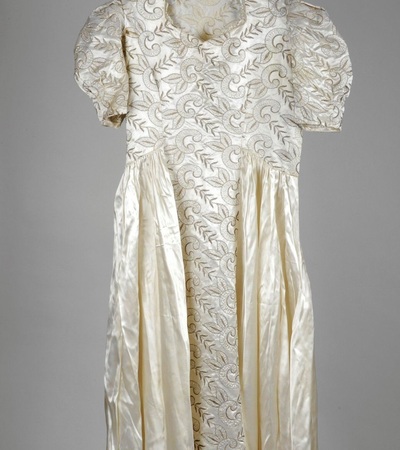
Wartime wedding dress
A wedding was a great opportunity to rally round and spend time with loved ones. On 17th June 1943 Eileen Briggs married Harold Townend. Eileen had worked at the department store Butterfield’s and the fabric for the dress was put aside for her. Some of her colleagues pooled their coupons so that she could purchase the fabric. Eileen’s mother, Hilda, was a dressmaker and made the dress for her. The veil is made from Bruges lace. Harold worked for the Special Operations Executive who were often parachuted into enemy territory to work with resistance groups and disrupt enemy operations.
Labour camp dress
Worn by Kataryna Cieslik while in a Ukrainian labour camp and kept by her daughter for the emotive memories it holds.
"My daughter Lidochka this dress is my great history, mine and yours. My mama made it for me when I went home to visit from Nalchik and brought this material with me. in Russian it is called "markizet" all 61 years I loved this dress because the flowers were beautiful, now they have faded. I wore it on the way to Germany, the blouse ad dress I wore because I was afraid I'd lose them, they were a very precious memory for me. In that dress I went through camps - 6 months in gestapo prison, when me and your dad tried to escape from Germany"
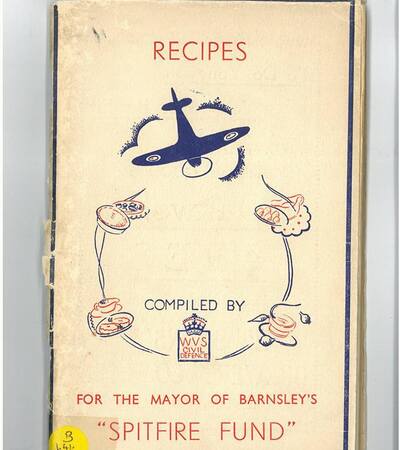.jpg)
Recipe book for fundraising
This recipe book was compiled by the women of the Women’s Voluntary Service for the Mayor of Barnsley’s Spitfire Fund. All proceeds from the book went towards the cost of making new aircraft. It also provided new inspirations for meals to be made with the available food rations. Reserach is ongoing but we can confirm that the campaign did result in a spitfire being purhased, which was called the Barnsley Chop!

VE Day commemorative tie
This tie belonged to Ernest Chapman who escaped four prisoner of war camps and survived! On his fourth attempt he jumped out of a moving train and joined the Greek guerrilla fighters. After the war he settled in Wombwell and became a miner at Houghton Main. Ernest and his wife Dot returned to Greece in 1976 where he received a hero's welcome, the villagers even offered to build him a house.
Group of Polish Army items
These items belonged to Stanislaw Zasada, a young Polish man who bravely offered to take his sister’s place in a labour camp. When he left there he joined the Polish Army and eventually came to Britain to fight on the side of the Allied Forces.
After the war, Stanislaw worked as an engineer for Wentworth Silkstone Colliery. There was a military encampment at Cannon Hall just outside Barnsley which was used by Canadian, American and Polish soldiers during the war. At the end of the war the camp was changed into a settlement camp for any Polish nationals wishing to stay in Britain. Poland had been annexed by Germany making it impossible for Poles to return to their homeland. The Polishc ommunity in Barnsley is still strong today.

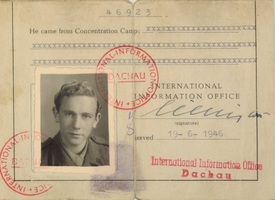
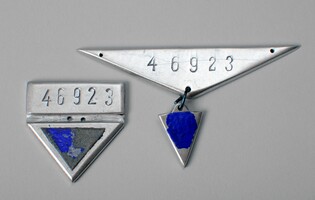
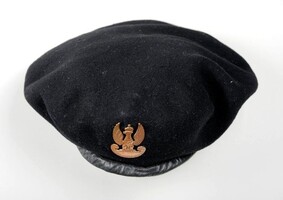.jpg)
